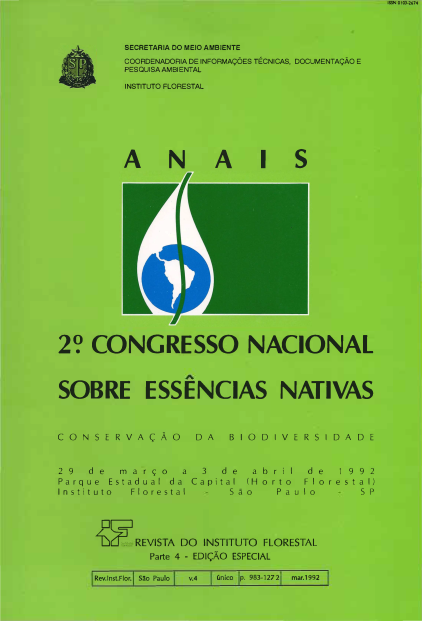VILA DE PICINGUABA : O CASO DE UMA COMUNIDADE CAlÇARA NO INTERIOR DE UMA ÁREA PROTEGIDA
DOI:
https://doi.org/10.24278/2178-5031.199244700Keywords:
Protected areas, radition/change, cultural diversity, planning, participation, settlements developmentAbstract
The Picinguaba village, at the Ubatuba municipality, São Paulo State, is located within the Serra do Mar State Park, at the so called Núcleo Picinguaba, since 1979. This Núcleo has approximatly 8.000 ha and is the only region of the Park which reaches the ocean tide zone. Originally the village was composed only by handcraft fishermen who have specific cultural characteristics. In the last 15 years there has been a transformation process at this village which is modifiing the local culture, is threatening the Park's objectives and is degenerating the inhabitant's quality of life. As a reflex of this situation, one finds today that 51 ,9% of the house buildings are owned by lourists. To ajoint discussion over the area management proposals, among the villagers inhabitants and the Forestry Institute, the Picinguaba Team worked on two analysis: an environmental, and a settlement one and held the seminary: "Picinguaba Village: Development and Conservation Proposals:. This paper aims to point out the area management possibilities, facing the conservation finalities of a State Park and the importance of assuring the expressions of the remainder differentiated cultural aspects oí tradicional communities at the State of São Paulo.
Downloads
References
ANGELO, S., 1990. Picinguaba: Três décadas numa Vila de pescadores do Litoral Norte do Estado de São Paulo. In: 8º Encontro Nacional de Geógrafos, Salvador, BA, julho de 1990. Anais (no prelo).
OONSELHO DE DEFESA DO PATRIMÔNIO HISTÓRICO, ARQUEOLÓGICO, ARTíSTICO E TURíSTICO DO ESTADO (CONDEPHAAT), 1976. Tombamento de aglomerados urbanos e unidades de vizinhanças primitivas do litoral paulista, Processo nº 20. 126[16, SP, Secretaria da Cultura.
CONSELHO DE DEFESA DO PATRIMÔNIO HISTÓRICO, ARQUEOLÓGICO, ARTíSTICO E TURíSTICO DO ESTADO ( ),1976. Tombamento dos aglomerados humanos de habitação de Picinguaba, Ubatuba. Processo nº 20.103[16, SP. Secretaria do Estado da Cultura.
DIEGUES, A. C., 1988. Diversidade biológica e culturas tradicionais litorâneas: o caso das comunidades caiçaras - mimeo. Doe. apresentado na 4ª Conferência da UICN - União Internacional para a Conservação da Natureza e dos Recursos Naturais. São José, Costa Rica.
FONSECA, F. P.; VIANNA, L. P. & BRITO, M. C. W. de., 1990. População e Manejo nos Parques Estaduais Paulistas. In: 8º Encontro Nacional de Geógrafos, Salvador, BA, julho de 1990. Anais (no prelo).
MORAN, E. F., 1990. A Ecologia Humana das Populações da Amazônia. Rio de Janeiro, Vozes, 367 p.
MUSSOLlNI, G., 1980. Aspectos da cultura e da vida social no litoral brasileiro. Revista de Antropologia, São Paulo, 1(2).
ROCHA, GILMAR R. da, 1980. Uso do Solo na Vila de Picinguaba - Ubatuba. T. G. I., F. A. U. Brás Cubas, Mogi das Cruzes, SP.
SECRETARIA DO MEIO AMBIENTE DO ESTADO DE SÃO PAULO, 1990. Dossiê Picinguaba. Relatório interno. Departamento de Reservas e Parques Estaduais do Instituto Florestal, elaborado por BRITO, M. C. W. de & VIANNA, L. P., São Paulo.
SIQUEIRA, A. D. & VIANNA, L. P., 1991. Ocupantes em Unidades de Conservação: O caso de Despraiado - EEJI. In: Iº Seminário de Desenvolvimento Sustentado, São Paulo, SP, outubro de 1989. Anais.
















